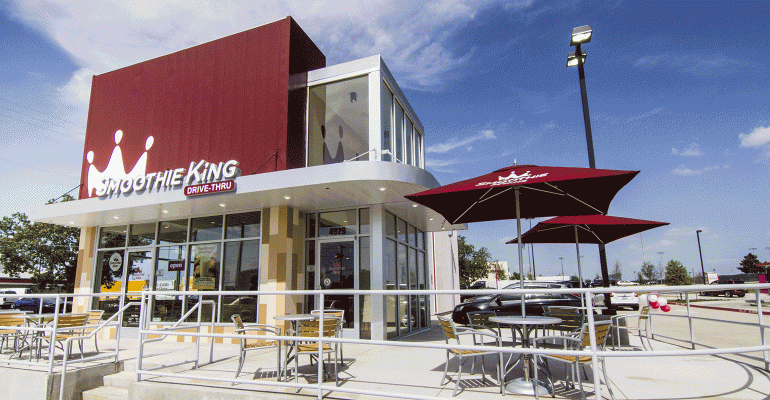Smoothie King has always promoted the idea that it’s healthier to drink a blend of fruit, veggies, protein and ice than it is to consume a full meal. That belief has fueled the New Orleans-based chain’s expansion to more than 900 locations by the end of this year.
Problem is, consumers’ views on what constitutes “healthy” has changed over the years. It’s not good enough to eat a bunch of fruit and vegetables -- that stuff needs to be properly sourced. Sugar must be cut back. And there can be nothing artificial.
And so Smoothie King’s recent move toward “Cleaner Blending” was aimed at keeping its position as king of the health hill, while removing added sugar from more than 50 smoothies from a menu of more than 60 items.
“The industry is moving in that direction,” CEO Wan Kim said in an interview. “We are aiming for the healthier alternative. But in order for us to stay the healthier alternative, we need to move in that direction, too.”
A remarkable number of restaurant chains have made changes to menus and ingredient sources in a bid to win over customers increasingly concerned about what goes into their food.
Chipotle Mexican Grill Inc. and Panera Bread Co., the two big fast-casual chains, spent the spring in an arms race of sorts to win the title of industry’s cleanest menu. The pizza chain Papa John’s International Inc., meanwhile, worked on its own clean menu effort and even named a chief ingredient officer.
Numerous other chains have taken steps to improve ingredient sources and an entire generation of fast-casual chains has emerged, all of them trying hard to win over ingredient-conscious consumers.
Kim said that Smoothie King has heard from customers who want these changes made, and after researching industry trends and consumer demands, they decided to make the changes.
“We need to really change a lot of things in order for us to stay a better product,” he said. “When you ask our customers, our guests, what they tell us is that whenever they walk into a Smoothie King they feel good about it. [But] in order for us to stay relevant, we have to change.”
The chain had already removed high fructose corn syrup, trans fat, hydrogenated oil, gluten and other ingredients. The newest effort will remove artificial flavors, colors, preservatives and added hormones. It will also introduce non-GMO fruits and vegetables.
“We believe our cleaner blending will be our foundation,” Kim said.
Smoothie King started as a health foods store in 1973. The smoothies that the store developed became the base for the country’s first smoothie chain by 1989.
Smoothie King has been on a roll lately, generating system sales growth of more than 20 percent in each of the past two years, to $332.9 million in the latest year, according to NRN Top 200 data.
The chain has focused on aggressive unit growth in the U.S., as consumers drink a lot more smoothies.
The chain expects to finish the year having added 115 locations after adding 100 the year before. The company expects to add 145 locations next year.
About 70 percent of the new units come from existing franchisees, which Kim believes is an important indicator of a system’s success.
That’s likely due to the company’s improved unit volumes. Estimated unit sales have increased about 8 percent in each of the past two years, according to NRN data. Franchisees are more likely to add locations if they’re unit volumes are improving. “Our franchisees are seeing where we are heading, and I think they like the direction we are heading,” Kim said.
The chain had seemed poised to take that further this year with its first-ever national television ad campaign.
But the campaign didn’t work as the company hoped, Kim said. “I don’t think we got what we expected,” he said. “I do think that, by doing it the first year, we should see better results than we’re seeing.”
Kim said the company is “evaluating the idea” of whether to continue advertising on television. For now, the chain’s shift to cleaner ingredients will be told through ads on social media.
“A lot of our guests are moving to social media,” Kim said. “That trend has been bigger than what we expected.”
Contact Jonathan Maze at [email protected]
Follow him on Twitter: @jonathanmaze

